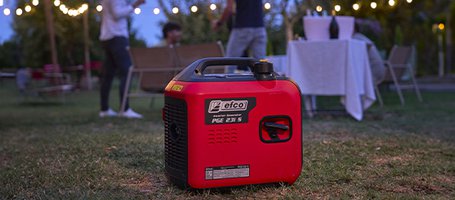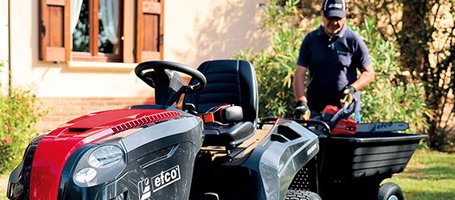In summer, when they are in full bloom, vineyards can all look the same to the untrained eye. In reality, vines conceal a precise structure beneath their blanket of leaves and clusters. The architecture that is given to vine plants by pruning them, in order to maximise their production potential, is called “vine training”.
In viticulture, choosing the right type of training system is crucial because, in principle, it has a decisive impact on the success of a vineyard. It should be determined based on the grape variety, the rootstock, the density of the vineyard, the climate, the soil type, the local topography (plains, hills, etc.), the desired result (an abundant harvest, or one that is limited but high-quality), the possibility of mechanised cultivation (mainly referring to pruning and harvesting). Here in Italy, there are different types of vine training systems—and therefore different methods of vine pruning—due to the diversity of environments, vine species and local traditions in different parts of the country.
Today we talk about the vine processing aspect of viticulture, providing an overview of some of the main types: married vine, head-trained, pergola trellising, tendone trellising, Guyot, double-arched, spur-pruned cordon, free cordon, Sylvoz, Casarsa and GDC.
Vine processing and training
Why is vine training so important in viticulture? Because exposure to sunlight is instrumental to the quality and composition of grapes and, therefore, the characteristics of the wine they produce. The amount of light absorbed by the vine depends on the height of the plant, the exposed surface, the thickness and shape of the canopy—all of which are aspects related to the vine training system—as well as the orientation of the rows and the plant density (determined by the distance between rows and the spacing between plants within the row). All these factors also affect the healthiness of the vine plants and the incidence of disease and parasite attacks.
Vine training systems can be classified in various ways. For example, based on: the height of the shoots (i.e. one-year-old branches); how the plants are arranged in the space (espalier or row, free canopy or curtain, volume, roof); the type of pruning required (short, long or mixed), whether pruning and harvesting are mechanisable; or whether the system is traditional or modern. So, let's find out the most common training systems.
Married-vine is a technique with ancient origins, which uses a tree as a living support to encourage shoot growth. It involves the use of individual trees (such as maples and elms) or rows of trees; the latter system is called alberata (literally “small tree”) and can be done with olive trees, fruit trees, maples or poplars. Each geographical area has developed its own version of married-vine and alberata vine training.
Head training (bush-vine) is a traditional "volume" type training system that needs no support system and involves keeping the vine low to the ground, like a bush. This technique is widespread in drought-affected areas, such as southern Italy, and in cold climates. There are multiple variants of head training, with different vine pruning strategies, although they require a lot of manual work. One interesting solution is to grow a small number of vines or keep them in pots.
Pergola trellising exists in multiple local and variant styles, such as pergola trentina, pergola veronese, low pergola from the Cinque Terre; tendone (horizontal pergola); bellussera (broad and high) and raggiera (wire spokes) system. A pergola is typically a system of metal wires, supported by poles, on which the shoots grow. The roof of a pergola trentina consists of parallel wires sloping upwards with respect to the ground. It supports 2-4 fruiting canes (shoots with the fruiting buds they will produce in the following months) for each vine, arranged like the spokes of a wheel and Guyot-pruned (see below). Pergola veronese differs in terms of the roof angle, which is horizontal rather than sloping.
Tendone is a typical training system used throughout central-southern Italy, particularly in growing vines for table grapes: each vine has 3-5 fruiting canes resting on a network of horizontal wires supported by a scaffold of poles.
One of the most modern training systems is espalier, of which the main sub-types are listed below. The Guyot system involves pruning the vines on each plant to leave just one fruiting cane and one spur (short stub with few buds). The fruiting cane must be folded horizontally along the row, whereas the spur is left to produce branches from which the new fruiting cane is selected the following year. Vines grown in this way need a scaffold of poles and three horizontal wires: the lowest one to support the fruiting cane and the others to support the vegetation and the grape bunches produced in summer. The double-arched training system is derived from the Guyot system and features one or two downward-arching fruiting canes and one or two spurs.
One of the most common systems is spur-pruned cordon, whereby the trunk of the vine is left to extend horizontally along a wire, in a permanent cordon. It is another kind of espalier training and requires poles carrying wires at three heights: the lowest wire supports the cordon, onto which spurs with 2-3 buds are inserted, while the others support the foliage and clusters that will grow from the spurs. The two-wire vertical trellis (or simple curtain), derived from spur pruning, is supported by a single wire. As a result, the branches bend downwards on both sides of the cordon, under the weight of the vegetation and clusters. They are mechanisable systems as regards both pruning and harvesting.
Another form of espalier training with permanent cordon is Sylvoz. In this case, long cropped fruiting canes folded downwards are inserted on the cordon; the poles support a series of 5-6 wires: shoots that will produce clusters are tied to the lowest wire, whereas the second wire supports the cordon and the highest wires the vegetation.
Casarsa is a training system that originates from the Sylvoz system. The fruiting canes are not tied below the cordon, but left to bend as the vegetation and bunches develop. Whereas, foliage intended for the plant’s renewal is supported on the highest wires. It is a very adaptable system, so much so that it can be applied in vineyards that are already productive, and is mechanisable.
GCD (Geneva Double Curtain) is a system in which each row of vines has two pendent curtains of vegetation, one on each side of the row. The scaffold is made up of T-posts with wires attached to both tips stretching between each post. Each wire supports one of 2 permanent cordons with which each plant is trained. It is a fully mechanisable vine cultivation system.


Vine pruning and more
Vines are planted in the form of grafted rooted cuttings. To achieve the desired structure, the rooted cuttings require several years of shape pruning, which varies depending on the training system chosen, In the first years, the vines are not immediately fixed to the supports, but are left to grow free for a certain period.
When the vines come into production, shape pruning is replaced with production pruning. This involves winter or dry pruning during the vegetative rest period (between November and March) and summer or green pruning between spring and summer (removing suckers, trimming, tying shoots, topping, deleafing and bunch thinning). When pruning vines, you can always rely on the precision of manual pruning tools such as pruning shears.
Find more information about vine pruning in our article on how and when to prune vines and olive, lemon and apple trees.
In addition to normal pruning of vines, special interventions may be needed in the case of plants affected by wood diseases, for example. To prevent the infection from spreading, you may have to remove them from the vine before winter pruning, using pruning tools that must be cleaned and disinfected. Diseased vines should be drastically cut back, for example with a pruning chainsaw, and then uprooted, remembering that any sawdust, wood and infected roots must be removed from the vineyard.
To clear away vine pruning residues between the rows, use a blower. Alternatively, you can leave them on the ground and then shred them with a flail mower, before tilling to mix them into the soil.
If, on the other hand, you have chosen to grass over the soil of your vineyard, mowing is a routine maintenance task that—depending on the type of grassing, the geography and size of your vineyard— you can carry out with a flail mower or wheeled brushcutter, or alternatively with a garden tractor, lawnmower or brushcutter.
On the subject of clearing vineyards by mowing grass and weeding, here are some more in-depth articles: wheeled brushcutter or flail mower: which should you choose?, guide to garden tractor selection, everything there is to know about self-propelled lawnmowers and which is the best brushcutter.









